Kaw River Kitchen
Mystery
(Make sure you read the story behind this dish which will be at the end of book review)
(A
premium chili recipe created along the banks of the Kansas River by a
Jayhawker. You may use ground beef, cubes of beef or pork, or ground meatless
soy/vegetable crumbles. In each case, the amounts listed for each ingredient in
the list below remains the same. I usually double or triple the ingredients so
I have enough to enjoy for several days.)
INGREDIENTS
Main
Ingredients
2
lbs. coarsely ground beef (or soy/vegetable crumbles)
2
lbs. (or a 40 oz. can) of kidney or pinto beans
2
medium onions, chopped
2
green peppers, chopped
2,
14 oz. cans of chopped tomatoes (note: some are “chili ready”)
1
garlic clove, minced (in lieu of garlic glove, use 1 tsp. garlic powder)
3
Tblsp. Canola or Olive oil (or other vegetable oil)
Herbs
& Spices
2
Tsp. salt
3-1/2
Tsp. chili powder
½
Tsp. black pepper
½
Tsp. crushed red pepper
½
Tsp. paprika
½
Tsp. oregano
2
Tsp. cumin seed, ground
1
Tblsp. brown sugar
½
Tblsp. dry mustard
1
Tsp. celery salt
1
bay leaf
1
dash Tabasco sauce
1
Tblsp. white vinegar
1
cup water
Optional:
I cup of red wine (or you may substitute another cup of water, if a thinner
chili is desired). Add the wine about ½ hour before serving.
Directions
It
is best to use a large professional-quality heavy steel or aluminum pot, though
a Teflon-coated pot is fine. It should be at least 6 quarts and preferably 8
quarts or more in size.
Prepare
all ingredients BEFORE beginning to cook!
Add
onions and oil to pot and sauté for a few minutes. Add meat (or
veggie-crumbles) and stir. Add beans. Add remaining ingredients to meat, beans
and onions. Simmer uncovered for about 2 hours. Cook longer for better
flavor—6-8 hours. (For even better flavor, after cooking, put chili in
refrigerator overnight and when ready to eat, heat up for about 1 hour). Add
wine about ½ hour before serving. Serves 10.
Finding Billy Battles - Review by Martha A. Cheves, Author of - Stir, Laugh, Repeat; Think With Your Taste Buds; A Book and A Dish
"I made it a point during my life to keep a record of my comings and goings, events that I experienced, people I met - both good and bad - and places I traveled to," he continued. "I have written something like twelve journals. About a dozen years back, I began writing my memoirs based on those journals. Never finished it. I don't expect you to understand what I am about to tell you right now. You are still a boy. But later, when you are grown and you have finished your education, you will better understand things. It is just as well, because I prefer that a lot of what I am writing not be available to others until after your grandmother and I are gone." "Ted, I want you to take my journals, my memoirs, all my belongings, and someday, perhaps twenty years from now, you can help me set the record straight about some things I did, people I met, and some events I witnessed."
These were the instructions Ted Sayles' great-grandfather Billy Battles gave him at the young age of 12. Forty years later, Ted received some old chests filled with a historian's treasure - firsthand accounts of some of the most significant events and people in nineteenth-century and early twentieth-century history. The journals within brought to life places such as Tombstone, the Crystal Palace Saloon, and the OK Corral, as well as people such as Wyatt and Virgil Earp, Doc Holliday and even Bat Masterson.
As you read Finding Billy Battles, you'll travel with him as he works as a scribbler for several newspapers that had sprung up in the west. You'll also feel his fears as he faces some truly dangerous men of the time.
I don't normally enjoy books of this time but following Billy became a truly exciting journey for me. It became a book I didn't want to stop reading. It's educational as well as enjoyable and one I would recommend for everyone. I do believe you will enjoy it as I did. Now I'm looking forward to reading the next book in this series titles The Improbable Journals of Billy Battles. I expect it will be just as good.
THE STORY OF KAW RIVER KITCHEN MYSTERY
(This goes with the recipe above)
(This goes with the recipe above)
The Kaw River, also known as the Kansas River, cuts through the heart of the rolling Kansas plains, fed by the Big Blue and Black Vermillion rivers that flow from the north. It is neither an especially impressive nor noteworthy stream. For example, it doesn't compare with more majestic tributaries like the Mississippi or the Missouri Rivers, which are known for their breadths and lengths and histories as rivers of commerce.
Instead, the Kaw was known by the Cheyenne, Comanche, Oglala Sioux, Kiowa and Kickapoo Indians who lived for centuries along its banks as the "water of the tall grass." The Kaw was a good place to water horses and livestock and to hunt the millions of buffalo and antelope which once ruled the Kansas plains.
Both the Oregon and Santa Fe trails followed the Kaw's banks before the two famous routes leading west from Westport, Mo. (now Kansas City) separated with one leading off into the vast northwestern prairies and the other into the arid badlands of the southwest. The wagon ruts left by thousands of covered wagons and buckboards can still be seen along the Kaw's banks.
Not far from its western source, is Ft. Riley, home of the 7th Cavalry. And this is where the story of the chili you are about to consume begins.
Most people will remember the 7th Cavalry for its disastrous encounter with the Sioux and Cheyenne Nations at The Little Big Horn River in what is now Montana. Among those with Gen. George Armstrong Custer on that fateful day on June 25, 1876 was Capt. George W. Yates, an officer attached to the 7th Cavalry since 1874 and a veteran of countless battles and skirmishes with the plains Indians.
Prior to his posting at Ft. Riley and his untimely demise at the crest of a hill overlooking the Little Big Horn, Capt. Yates had served in the Southwest Territories. There he met and married Estella del Carmen Huerta, a woman whose ancestors were Spanish landowners in New Mexico. It was the Huerta family cook who first introduced Capt. Yates to Southwestern chili--a piquant and biting concoction made with suet, pork and beef shoulder and spiced with coriander and ancho, pastilla and casbel peppers.
When he and Estella moved to Kansas, Capt. Yates had to adapt his chili recipe accordingly. There was no coriander or ancho, nor did pastilla and casbel peppers grow along the Kaw River.
The result is what has come to be known in the Yates clan as Kaw River Kitchen Mystery.
Why mystery?
Because when asked what he put into his chili, Capt. Yates would only say:
"I go out along the Kaw and whatever I find growing wild that hasn't been buried under buffalo chips or defiled by cattle and horses I put into my saddle bag. Then I just add meat and beans. And I'll be damned if it isn't a mystery to me why the outcome is edible."
Capt. Yates's creation has undergone a few subtle "adjustments" in the intervening years. For example, you won't find many of the exotic flora (or fauna) indigenous to the Kaw River in the current version.
But by and large the Kaw River Kitchen Mystery of today is pretty close to the original version--except for the occasional buffalo chip flake or two that old-timers swore gave Capt. Yates's concoction just the right touch of "mystery."
Enjoy!
Ron Yates,




 "This book is made up of 3 individual stories. All three are short reads and other than the setting, which is Mexico, all three are completely different."
(Martha A. Cheves)
"This book is made up of 3 individual stories. All three are short reads and other than the setting, which is Mexico, all three are completely different."
(Martha A. Cheves)
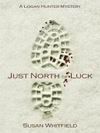 "You'll follow Logan as she tramples through kudzu, goes to her first Testicle Festival, rents a room from a woman who runs around at night in the nude and connects with a wolf. You will also follow her as she gets her man, or should I say men."
(Martha A. Cheves)
"You'll follow Logan as she tramples through kudzu, goes to her first Testicle Festival, rents a room from a woman who runs around at night in the nude and connects with a wolf. You will also follow her as she gets her man, or should I say men."
(Martha A. Cheves)
 "Will the people of Hollow Gap pull together and defend themselves from the Indian up-rise or will they fall apart. Find the answers to these questions and more when you read this book of taming the West through love."
(Martha A. Cheves)
"Will the people of Hollow Gap pull together and defend themselves from the Indian up-rise or will they fall apart. Find the answers to these questions and more when you read this book of taming the West through love."
(Martha A. Cheves)
 "I would NEVER have guessed the turn of events that make up the last 20 pages of Fresh Frozen. The hiring of the spy will surprise you and the murder will surprise you even more. So if you love a good mystery, this book is definitely for you."
(Martha A. Cheves)
"I would NEVER have guessed the turn of events that make up the last 20 pages of Fresh Frozen. The hiring of the spy will surprise you and the murder will surprise you even more. So if you love a good mystery, this book is definitely for you."
(Martha A. Cheves)
 "As I read I felt as if I was a witness watching this evil man do the things he did to these young women. As I read through the trial I felt like one of those ready to convict him. As I listened to the comments by his wife, I could feel her pain and confusion."
(Martha A. Cheves)
"As I read I felt as if I was a witness watching this evil man do the things he did to these young women. As I read through the trial I felt like one of those ready to convict him. As I listened to the comments by his wife, I could feel her pain and confusion."
(Martha A. Cheves)
 "After reading Breaking My Silence I saw Jane as a strong person who was determined to do whatever was needed to get her children back into her life and to do whatever it took to make her life as complete as possible without the prostitution. This was one of the most informative books I've ever read about a subject that is normally kept behind closed doors."
(Martha A. Cheves)
"After reading Breaking My Silence I saw Jane as a strong person who was determined to do whatever was needed to get her children back into her life and to do whatever it took to make her life as complete as possible without the prostitution. This was one of the most informative books I've ever read about a subject that is normally kept behind closed doors."
(Martha A. Cheves)
 "
While reading Genesis Beach I found myself not wanting to put it down. Each page had a piece of evidence that would help me solve the mystery before Logan. I really thought I had pin-pointed the murderer. Boy was I in for a shock."
(Martha A. Cheves)
"
While reading Genesis Beach I found myself not wanting to put it down. Each page had a piece of evidence that would help me solve the mystery before Logan. I really thought I had pin-pointed the murderer. Boy was I in for a shock."
(Martha A. Cheves)
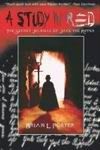 "I've enjoyed reading this book. It's a cross between a "fiction" and a "true crime." So if you enjoy either genre you will enjoy A Study in Red. Do keep in mind that this book is very descriptive."
(Martha A. Cheves)
"I've enjoyed reading this book. It's a cross between a "fiction" and a "true crime." So if you enjoy either genre you will enjoy A Study in Red. Do keep in mind that this book is very descriptive."
(Martha A. Cheves)
 "The story captured me from the beginning, the evil of Rovella never ceased to amaze me, and the love that was always there but didn't surface due to guilt made me feel the pain that I'm sure she felt. The ending was perfect."
(Martha A. Cheves)
"The story captured me from the beginning, the evil of Rovella never ceased to amaze me, and the love that was always there but didn't surface due to guilt made me feel the pain that I'm sure she felt. The ending was perfect."
(Martha A. Cheves)
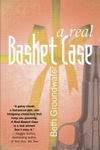 "This has been a really enjoyable book.
I recommend it to anyone who enjoys a good mystery. Beth, don't change your way of writing! I've really enjoyed reading Basket Case and will be reading more of Beth's books."
(Martha A. Cheves)
"This has been a really enjoyable book.
I recommend it to anyone who enjoys a good mystery. Beth, don't change your way of writing! I've really enjoyed reading Basket Case and will be reading more of Beth's books."
(Martha A. Cheves)
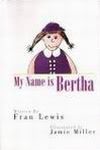 "I feel this is a wonderfully written book that would be helpful not just for young people who are overweight but also for those who look at a person, no matter the age, call them names, shun them and refuse to accept them as they are."
(Martha A. Cheves)
"I feel this is a wonderfully written book that would be helpful not just for young people who are overweight but also for those who look at a person, no matter the age, call them names, shun them and refuse to accept them as they are."
(Martha A. Cheves)
 "Bertha Speaks Out is a very enjoyable book to read. Bertha finds herself in positions that will make you laugh and cry. You will feel her pain but also feel her pride when she stands up for what is right. It’s a must read for children as well as adults.
"
(Martha A. Cheves)
"Bertha Speaks Out is a very enjoyable book to read. Bertha finds herself in positions that will make you laugh and cry. You will feel her pain but also feel her pride when she stands up for what is right. It’s a must read for children as well as adults.
"
(Martha A. Cheves)
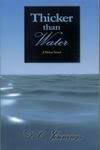 "Read Thicker than Water and ask yourself these questions. Did the wife make the right choice? Was her decision worth 15 years of her family’s life? Would you have made the same decision?
I highly recommend Thicker than Water. As I said, it was a joy to read."
(Martha A. Cheves)
"Read Thicker than Water and ask yourself these questions. Did the wife make the right choice? Was her decision worth 15 years of her family’s life? Would you have made the same decision?
I highly recommend Thicker than Water. As I said, it was a joy to read."
(Martha A. Cheves)
 "As I read I kept asking myself “Who would put out a hit on David and why?” “Who are The Chosen Few and what do they have to do with David?” “Will Max get to David before it’s too late?” You will have to read The Chosen Few yourself to find the answers to these questions."
(Martha A. Cheves)
"As I read I kept asking myself “Who would put out a hit on David and why?” “Who are The Chosen Few and what do they have to do with David?” “Will Max get to David before it’s too late?” You will have to read The Chosen Few yourself to find the answers to these questions."
(Martha A. Cheves)
 "This book has taught me that life is like a chain. Everyone we meet becomes a link in our chain. Some links may be weak, but the strong ones keep the chain from breaking. And as memories and secrets are shared with those strong links, they become even stronger."
(Martha A. Cheves)
"This book has taught me that life is like a chain. Everyone we meet becomes a link in our chain. Some links may be weak, but the strong ones keep the chain from breaking. And as memories and secrets are shared with those strong links, they become even stronger."
(Martha A. Cheves)










 I'm from Georgia, moved to North Carolina by way of Florida. I've been in Charlotte for 14 years and love it. The recipes in my book Stir, Laugh, Repeat are all tested by "Food Testers" of which I now have 24. They try a dish and rate it from 1-10 with only those scoring at least an 8 making the book. My website is a holding place for my 2nd book Stir, Laugh, Repeat... Again. Please visit my site to find new recipes and tips. All recipes are easy, using common ingredients and according to my testers, great!
I'm from Georgia, moved to North Carolina by way of Florida. I've been in Charlotte for 14 years and love it. The recipes in my book Stir, Laugh, Repeat are all tested by "Food Testers" of which I now have 24. They try a dish and rate it from 1-10 with only those scoring at least an 8 making the book. My website is a holding place for my 2nd book Stir, Laugh, Repeat... Again. Please visit my site to find new recipes and tips. All recipes are easy, using common ingredients and according to my testers, great!






No comments:
Post a Comment